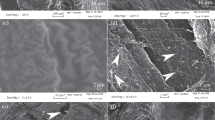Abstract
Tendons attach to the limb skeleton via chondral-apophysary or periosteal-diaphysary entheses. It was the aim of the present study to investigate the tendon entheses of the temporal, the masseter, as well as the medial and lateral pterygoid muscles, considering the biomechanics and the mode of osteogenesis at the attachment sites. The origin and insertion zones of the four masticatory muscles were studied histologically and by polarization light microscopy in six halves of human heads. Contrary to the limb skeleton no causal relationship between the histological structure of the tendon entheses and the osteogenic mode of the bone areas involved was observed in the masticatory muscles that were studied. Based on the histological findings, a purely structural classification of the tendon attachments irrespective of the osteogenesis is therefore proposed that is applicable to the entire skeleton. It is possible to distinguish between tendon entheses inserting into periosteum, into bone or into fibrocartilage.
Tendon attachments with periosteal insertion are found at the temporal plane, the retromolar triangle, zygomatic arch, lateral pterygoid plate, in the caudal zone of the pterygoid fovea of the neck of mandible as well as major portions of the ramus and angle of the mandible. The attachment zones in which collagen fibrils of tendons insert into the bone via the periosteum correspond in their structure to plane periosteal-diaphysary insertions into the diaphyses of long bones. Attachment zones to the bone are present at the inferior temporal line, the base of the coronoid process, the caudal surface of the zygomatic arch, the cranial zones of the pterygoid fovea of the neck of the mandible as well as at circumscribed areas of the ramus and angle of the mandible. In these zones the collagen fibers of the tendon insert immediately into the bone without any mediation of other tissues. The entheses resemble those of circumscribed periosteal-diaphysary attachments to long bones. Fibrocartilaginous entheses occur at the coronoid process, the cranialmost portions of the pterygoid fovea of the neck of the mandible as well as in circumscribed areas of the medial and lateral facets of the angle of the mandible. The structures of these attachment sites are comparable to chondral-apophysary tendon attachments. As for masticatory muscles, the described forms of tendon entheses occur at the same time in the majority of the attachment sites. From the structure of the three types of tendon entheses it is possible to conclude that they fulfill a biomechanical function similar to that of the limb skeleton, namely adapting the different elasticity moduli of bone and tendon tissues. From a technical perspective they can be considered to act as an ”angle and stretching brake”.
Similar content being viewed by others
Author information
Authors and Affiliations
Additional information
Accepted: 29 March 2000
Rights and permissions
About this article
Cite this article
Hems, T., Tillmann, B. Tendon entheses of the human masticatory muscles. Anat Embryol 202, 201–208 (2000). https://doi.org/10.1007/s004290000107
Issue Date:
DOI: https://doi.org/10.1007/s004290000107




